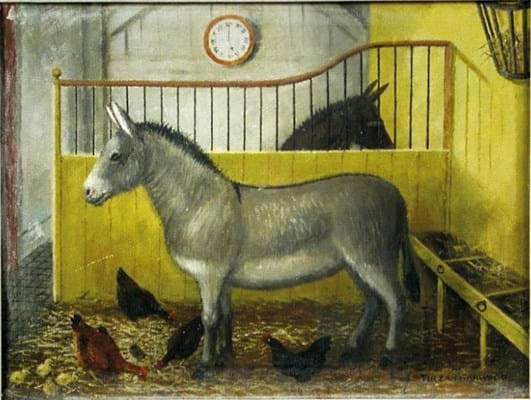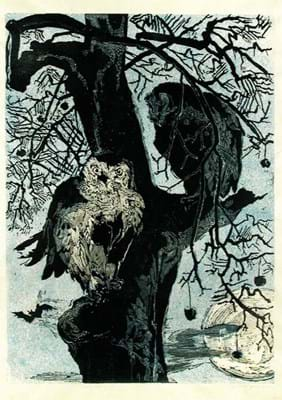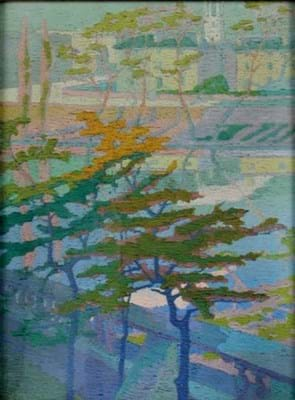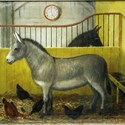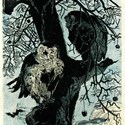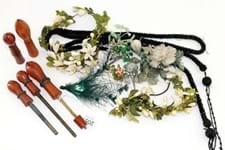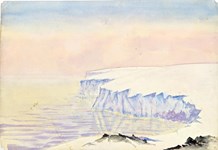The initiative was founded by painter and educator Nan Youngman (1906-95), and formed part of the social reforms that swept across Britain after the Second World War. The hope was by exposing children to art, it would improve their standards of taste and judgement.
Art advisers were sent by local authorities to acquire affordable pictures by artists, students and graduates at contemporary art shows. These were organised by Youngman and took place in London galleries, such as the Whitechapel Gallery.
Among the most enthusiastic was Cambridgeshire council. Although education cuts in 1969 forced Pictures for Schools to end, Cambridgeshire continued to acquire art, and by 1980 its collection had grown to more than 400 works.
Eventually, however, further cuts, changes in teaching methods and the rise in the value of some its works (making it difficult to lend and insure) resulted in the collection going into storage in 1990.
Over the years works have been siphoned off to free up funding for the council’s culture programme including a few select high-value works that were sold at Christie’s in 2009. A £450,000 LS Lowry oil called A Market Place, Berwick-upon- Tweed was among them.
The council has now consigned another tranche to Cheffins (22.5% buyer’s premium). The first part, running to 45 lots of Modern British oils and works on paper, was offered on May 11. A mix of trade and private buyers spent £121,630, with all bar one work sold (it got away post-sale) and much of the material improving on their attractive guides.
Female artists
A good representation of female artists in the collection proved highly lucrative, with a string of strong prices, and a clutch of records.
“There is huge interest in women artists of that period at the moment. Until recently it has been an overlooked area but now it’s really coming to the fore,” said Sarah Flynn, head of paintings at Cheffins.
The sale set the benchmark for two female artists in particular: Evelyn Dunbar (1906-60) and her £60,000 oil Joseph’s Dream (see ATG No 2292), and Tirzah Garwood (1908-51), the wife of Great Bardfield artist Eric Ravilious.
Garwood’s 11 x 15in (29 x 38cm) work depicts a pair of donkeys, Nathaniel and Patsy, in a stable with chickens. The animals lived next door to the nursing home in Colchester where Garwood lived out her final years. It is likely the work was painted from her bed, and was among the last she worked on before she died from cancer in 1951.
Estimated at £800-1200, eight phones drove bidding to £24,000, where it was knocked down to a private buyer.
Strong prices for female artist were also found among the linocuts.
Owls No.15 by Gertrude Hermes (1901-83), a Royal Academician who served on the selection committee for Pictures for Schools, was pursued beyond the £400-600 guide to sell for £2200.
The 2ft 8in x 2ft (83 x 59cm) work is from an edition of 50 and produced in 1955. Another example sold at Bonhams in 2015 for a premium-inclusive £1000.
Enid Marx’s (1902-98) Tiger Tiger linocut took £4400 against a £200-400 estimate. This was a hefty sum for a print that, although scarce, took £650 at Lawrences in Crewkerne last year.
Little Venice
Outside the Cambridgeshire council collection, an eagerly contested work at Cheffins was Charles Ginner’s (1878-1952) Little Venice, London.
The vibrant 2ft x 18in (59 x 45cm) oil on canvas, which came in an attractive gilded oak frame, sold to an anonymous phone bidder at £38,000 against an £8000-12,000 guide.
A leading figure of the Camden Town Group, Ginner painted the work in 1914-15 when he lived with fellow artist Robert Bevan in Little Venice. The work was acquired by the vendor’s father directly from the artist’s sister in 1969.
According to the Art Sales Index, Ginner’s top price at auction was paid for a large French painting of Dieppe, dated two years earlier in 1913, which sold for a premium-inclusive Can$210,600 (around £132,450) at Heffel in Vancouver in 2011.


